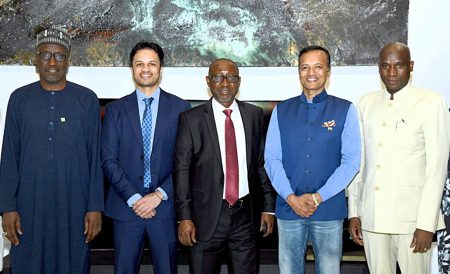
Lagos — An insightful new cut of the data sets behind the EI Statistical Review of World Energy has been published today, highlighting the complex variety of energy and emissions stories unfolding in economies around the world.
The Country Transition Tracker, which plots the relative progress of around 80 of the world’s largest energy consuming countries along eight metrics, has been released in advance of ADIPEC in the UAE this week and COP29 in Azerbaijan later in the month.
Ahead of speaking at both events, EI Chief Executive Nick Wayth CEng FEI, said:
“The Country Transition Tracker ranks the world’s largest users of energy along eight metrics, exposing the vast variety of energy transitions under way.
“This isn’t about best or worst, good or bad, but highlighting the complex, fragmented and lop-sided nature of progress towards the shared challenge of global net zero.
“International fora such as ADIPEC and COP29 are opportunities for countries to learn from each other and agree on greater collaboration to accelerate progress in as many places as possible.”
The Country Transition Tracker analyses full-year 2023 data from the EI Statistical Review of World Energy. It covers around 80 of the world’s largest energy consuming countries, representing more than 96% of global energy consumption and 95% of global emissions. It plots progress in them against eight metrics, highlighting a diverse picture:
- Energy-related greenhouse gas emissions. 42 of the 70 itemised countries have reduced their CO2e emissions since 2017, the first full year after the Paris Agreement was ratified. In this time, China increased its emissions by 2122 mtCO2e which is greater than the combined reduction of the 42 countries, 1533 mtCO2e. Of the 20 highest energy consuming countries, Germany has decreased its emissions the most since 2017, by 24%. Developed economies, particularly in Europe have exported much of the emissions to developing countries (China in particular) through reliance on overseas manufacturing.
- Fossil fuel consumption. 50 out of 79 countries have reduced their fossil fuel consumption. Ukraine saw the largest percentage decrease due primarily to the impact of the conflict, but Germany has decreased the most in absolute terms.
- Renewable energy consumption. In absolute terms China increased its renewable energy consumption by the most, in percentage terms it was Oman with a huge 100-fold increase due to an extremely low starting point.
- Power sector decarbonisation. France had the most decarbonised power system globally with over 90% of power generated from low-carbon sources, primarily nuclear energy (65% of total generation). India had the least decarbonised power system.
- Carbon intensity of the energy system. 54 out of 70 countries reduced the CO2 intensity of their energy consumption between 2017 and 2023 i.e. are decarbonising their energy system.
- Total energy consumption per capita. 50 out of 79 countries reduced their energy consumption per capita between 2017 and 2023. Qatar had the greatest energy consumption per capita and Bangladesh had the lowest.
- Economy-wide primary energy intensity. 60 out of 79 countries reduced their energy intensity (megajoules per $ GDP) between 2017 and 2023. In absolute terms, Venezuela had the largest increase in energy intensity and Trinidad and Tobago had the greatest decrease.
- Economy-wide carbon intensity. 56 out of 70 countries decreased the carbon intensity of their economy. Ireland had the least carbon intense economy (kg of CO2e emitted per $ GDP) at 0.07. Turkmenistan was the most carbon intense economy at 2.45 kg/$ GDP.



